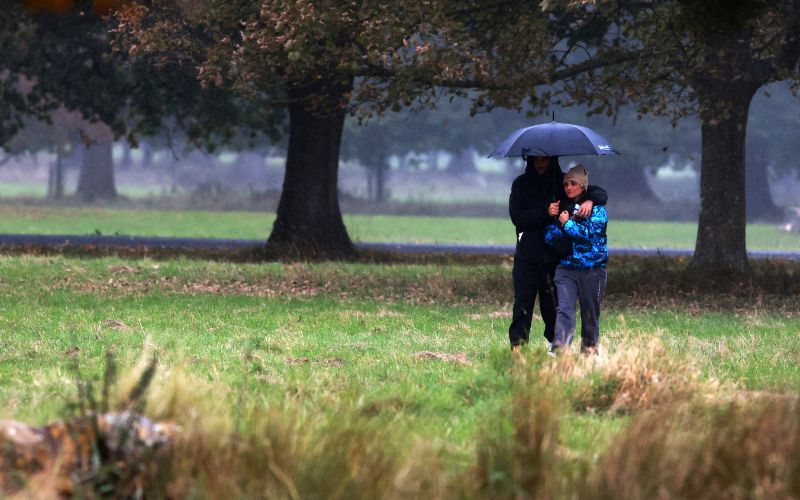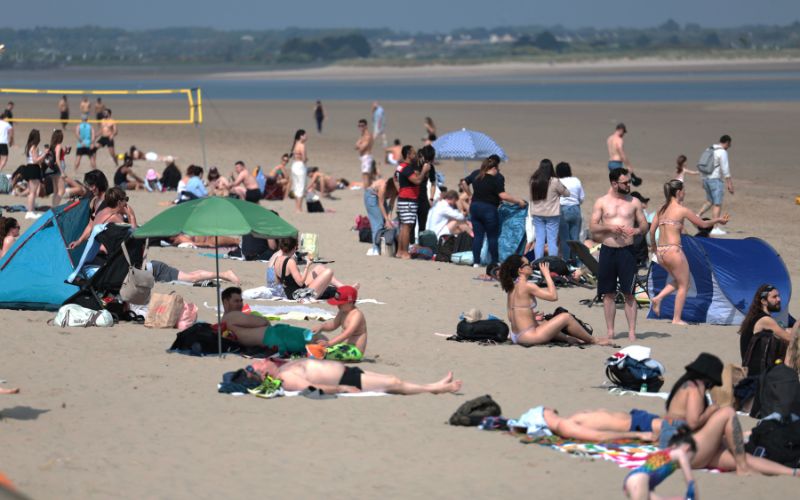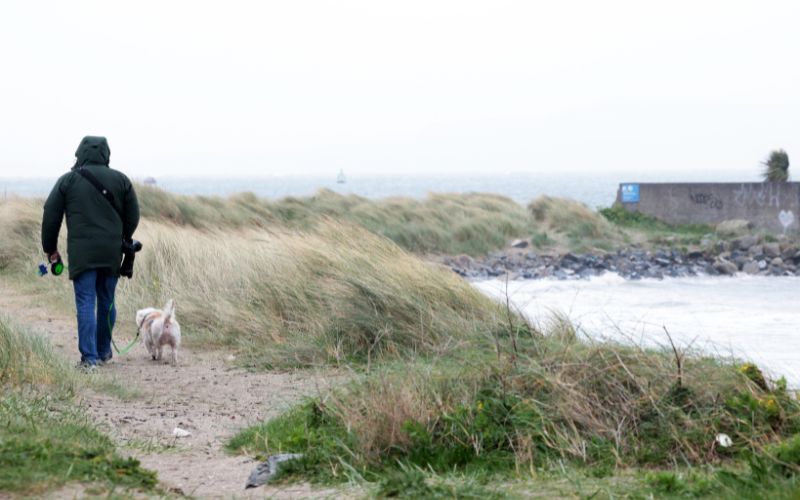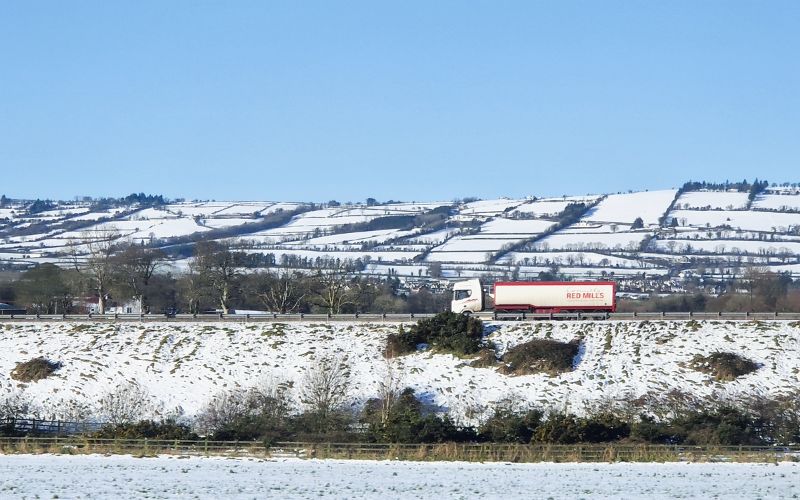Ireland overall had "mild" weather for 2024, with the first half of the year being "wet" and the second half being "dry."
“2024 was Ireland’s fourth warmest year on record, even though it may not have always felt that way, especially during the cooler than average summer months," Climatologist Paul Moore said on Monday upon the publication of Met Éireann's Annual Climate Statement.
"It was often cloudy during 2024 and this, along with continued high sea surface temperatures across the North Atlantic, led to higher nighttime temperatures being more influential, which drove the overall average temperatures up."
Although almost half a degree cooler than 2023, last year was still one of the warmest on record for Ireland, according to the Annual Climate Statement, published today. 📄
Check out the report in full 🔗➡️ https://t.co/6H7L70RcQ0 https://t.co/ETZPXkl2Dy
— Met Éireann (@MetEireann) January 6, 2025
In its 2024 Climate Statement, Met Éireann says Ireland’s overall warming trend continues in line with the global warming trend.
Seven of the top ten warmest years in Ireland have occurred since 2005, with 2024 being the fourth warmest year on record.
Sea surface temperatures (SST) across the North Atlantic have continued at or near record-high levels. This contributes to higher-than-average mean temperatures and increased moisture content in the atmosphere over Ireland.
Although 2024 was overall drier than average, there were many instances of heavy or intense rainfall which led to flooding.
Compound events, which involve multiple climate impact drivers occurring at the same time, are on the rise.
Met Éireann added that the latest Irish climate change projections indicate further warming in the future.
"This temperature change means the likelihood of extreme weather events occurring has increased," the meteorological service said.
"Irish rainfall patterns are expected to change, with an increase in both dry periods and heavy rainfall events. Global sea levels continue to rise.
"As a result, storm surge and coastal flooding risk around Irish coasts is expected to increase along with ‘compound events’ involving a combination of heavy rainfall and high tides.
"It is currently unclear how the frequency and intensity of storms impacting Ireland will change with climate change.
"There is high confidence, however, that maximum rainfall rates associated with these storms will increase with warming."
Rainfall in Ireland in 2024 - Below average at most stations, wettest in the South
The majority of annual rainfall totals across the country were below their Long-Term Average 1981-2010 (LTA).
Percentage of annual rainfall values ranged from 80% (693.3mm) at Dunsany, Co Meath (its driest year since 2001) to 111% at both Roche's Point, Co Cork (1084.0 mm) and Johnstown Castle, Co Wexford (1176.1 mm).
Annual rainfall totals ranged from 670.0 mm (88% of its LTA) at Dublin Airport, Co Dublin to 1652.3 mm (106% of its LTA) at Valentia Observatory, Co Kerry.
The highest daily rainfall total was 57.4 mm at Knock Airport, Co Mayo on Saturday, November 23 (during storm Bert).
The number of rain days ranged from 198 days at Dublin Airport to 279 days at Knock Airport, Co Mayo.
The number of wet days ranged from 129 days at Phoenix Park, Co Dublin to 220 days at Valentia Observatory, Co Kerry.
The number of very wet days ranged from 13 days at Dunsany, Co Meath to 53 days at both Newport, Co Mayo, and Valentia Observatory, Co Kerry.
It was the driest year on record at Finner, Co Donegal with 1036.9 mm (record length 13 years).
It was the driest year since 2010 at Ballyhaise, Co Cavan with 874.6 mm.
There were 15 separate dry periods (absolute droughts, partial droughts, and dry spells) observed in Ireland during 2024 between Tuesday, January 2 and Friday, November 15. Of these, 14 were dry spells at 13 stations, 1 absolute drought at one station (Moore Park, Co Cork in January), and zero partial droughts.

October 12, 2024: Rain in Dublin's Phoenix Park. (RollingNews.ie)
Temperature in Ireland in 2024: Above average everywhere
All mean air temperatures across the country were above their annual LTA.
Deviations from mean air temperature ranged from 0.1 °C (9.8 °C mean temperature) at Markree, Co Sligo to 1.1 °C (10.7 °C mean temperature) at Phoenix Park, Co Dublin.
Mean temperatures for the year ranged from 9.3 °C (0.7 °C above its LTA) at Knock Airport, Co Mayo to 11.6 °C (0.5 °C above its LTA) at Sherkin Island, Co Cork.
The lowest temperatures of the year were recorded on Thursday, January 18.
The lowest air minimum was reported at Athenry, Co Galway with a temperature of -7.3 °C and the lowest grass minimum reported at Oak Park, Co Carlow with -13.3 °C.
The highest maximum of the year was reported on Monday, June 24 at Phoenix Park, Co Dublin with a temperature of 26.6 °C.
All stations reported air and ground frost during the year.
The number of days with ground frost ranged from 23 days at Roche's Point, Co Cork to 114 days at Mullingar, Co Westmeath.
The number of days with air frost ranged from 1 day at Malin Head, Co Donegal to 44 days at Mount Dillon, Co Roscommon.

May 11, 2024: Summer weather at Burrow Beach in Dublin. (RollingNews.ie)
Sunshine in Ireland in 2024: Dull overall, sunniest in the East
Percentage of LTA sunshine values were variable (where available) across the country.
Percentage of annual sunshine values ranged from 89% (annual sunshine total of 1278.4 hours) at Cork Airport, Co Cork to 101% (annual sunshine total of 1318.3 hours) at Shannon Airport, Co Clare.
Annual sunshine totals ranged from 1163.1 hours (no LTA comparison*) at Gurteen, Co Tipperary to 1377.5 hours (no LTA comparison*) at Johnstown Castle, Co Wexford.
The highest number of daily sunshine hours recorded this year was 15.9 hours at Gurteen, Co Tipperary on Wednesday, June 19.
The number of dull days ranged from 100 days at Casement Aerodrome, Co Dublin to 112 days at Dublin Airport, Co Dublin.

January 6, 2024: Sunrise at Sandymount Beach in Dublin. (RollingNews.ie)
Wind in Ireland in 2024: Seven named storms directly affected Ireland, violent storm force winds were reported during storms Isha and Darragh
Annual mean wind speeds ranged from 5.9 knots (10.9 km/h) at Moore Park, Co Cork, Ballyhaise, Co Cavan to 14.9 knots (27.6 km/h) at Malin Head, Co Donegal.
There were numerous days with gales and strong gales.
Storm force winds were reported on Sunday, January 21, and Monday, January 22 during storm Isha, Tuesday, January 23 during storm Jocelyn, Sunday, October 20 during storm Ashley, Saturday, November 23 during storm Bert, Friday, December 6 and Saturday, December 7 during storm Darragh, and Sunday, December 22.
Violent storm force winds were reported Sunday, January 21 during storm Isha and Friday, December 6 during storm Darragh.
The number of days with up to strong gales ranged from zero days at a few stations to 14 days at Malin Head, Co Donegal.
The number of days with storm force winds were up to 5 days at both Mace Head, Co Galway and Malin Head, Co Donegal.
Both the year's highest gust and 10-minute mean wind speed was reported at Mace Head, Co Galway.

April 6, 2024: High winds hit the Dublin coast as Storm Kathleen comes to Ireland. (RollingNews.ie)




Comments